15 Fun Things to Do in Kyoto, Japan
Last Updated on September 19, 2025 by Audrey

Kyoto is Japan’s cultural heart, a city where golden temples shimmer over still ponds, geisha slip quietly down lantern-lit alleyways, and the air smells faintly of matcha and street food. I’ve been lucky enough to visit Kyoto three times now, and I fall in love with the city more with each trip.
Whether it’s your first visit or your fifth, Kyoto offers a mix of iconic landmarks, hidden gems, and experiences you can’t find anywhere else.
You can wander temples that have been standing for centuries, explore the Arashiyama Bamboo Forest, sample fresh regional specialties at Nishiki Market, and maybe even cross paths with a geisha at the street intersection.
In this guide, I’m sharing 15 fun things to do in Kyoto, from the must-see famous sights to a few off-the-beaten-path personal favorites. Here are the spots and experiences you won't want to miss during your trip to Japan’s old capital!
Don’t Miss My Top Choice!
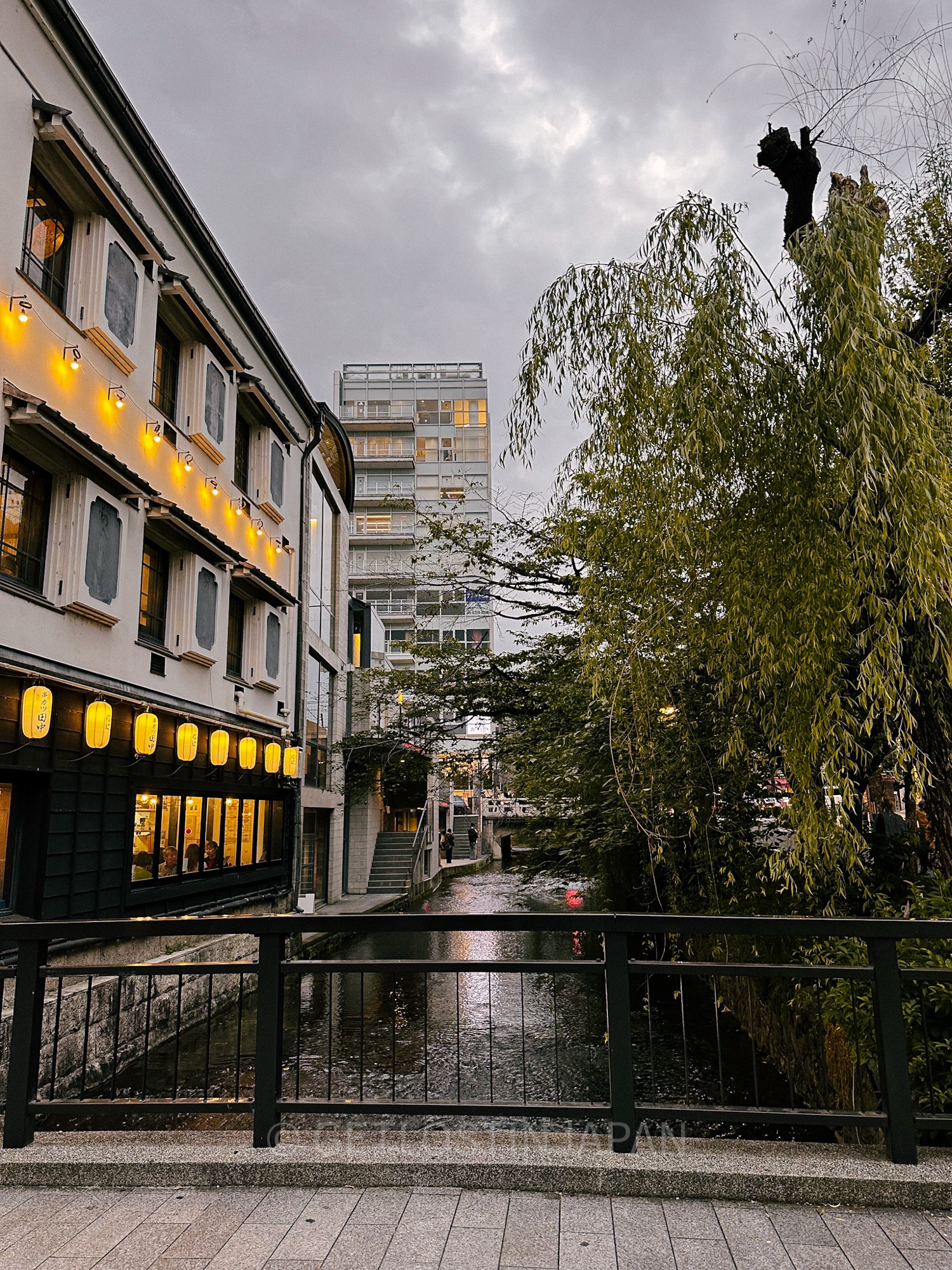
Short on time? The tour I loved the most and suggest booking ASAP is this one!
My personal FAVORITE thing to do is this evening walking tour in Kyoto. It includes exploring Gion, Kyoto’s geisha district, and includes a delicious 10-course kaiseki dinner! Plus, you’ll visit local places that would be easy to miss on your own.

Top Fun Things to Do in Kyoto, Japan
1. Visit Fushimi Inari Taisha and Hike the Iconic Torii Gates
If you’re looking for the top thing to do in Kyoto, then you have to visit Fushimi Inari Taisha, the iconic Shinto shrine famous for its thousands of bright red torii gates winding up Inariyama mountain. This is the spot plastered all over Instagram, and it’s just as breathtaking in person.
I’ve hiked Fushimi Inari three times now, though I’ve never actually made it all the way to the summit because it can be a bit of a long workout.
Most people aim for the Yotsutsuji intersection, which you can reach in about 45 minutes. You’ll know once you arrive, as the gates start to spread apart, revealing panoramic views of Kyoto.

You can choose to turn back here or continue upwards for less crowds and a better chance at a perfect photo.
The shrine is open 24/7 and free to enter, so you could squeeze it in anytime during your trip. However, it’s best to arrive before 8 AM, as all the tour buses start to arrive around 9 AM and continue to be busy for most of the day.
However, if you happen to come during the busy hours, don’t worry! As you head up the shrine, the crowds will gradually thin out and you’ll have opportunities for photos.
How to get to Fushimi Inari Taisha: Take the Keihan Main Line to Fushimi Inari Station (a 3-minute walk) or the JR Nara Line to Inari Station (right across from the shrine).
⛩️ Check out over 5,000 5-star reviews and enjoy FREE cancellation on this Fushimi Inari Tour! ⛩️

2. Enjoy the View from Kiyomizu-dera Temple
Kiyomizu-dera is hands down my favorite temple in Kyoto for its sheer beauty and sweeping views, and I can’t wait for you to experience it yourself.
Perched halfway up Mount Otowa, this 8th-century UNESCO World Heritage Site is one of the most photographed spots in Japan. The massive wooden stage juts dramatically over the hillside and frames a surreal panorama of Kyoto city.
Kiyomizu-dera is magical all year round, but spring and autumn are especially beautiful for cherry blossom season and vibrant fall foliage.
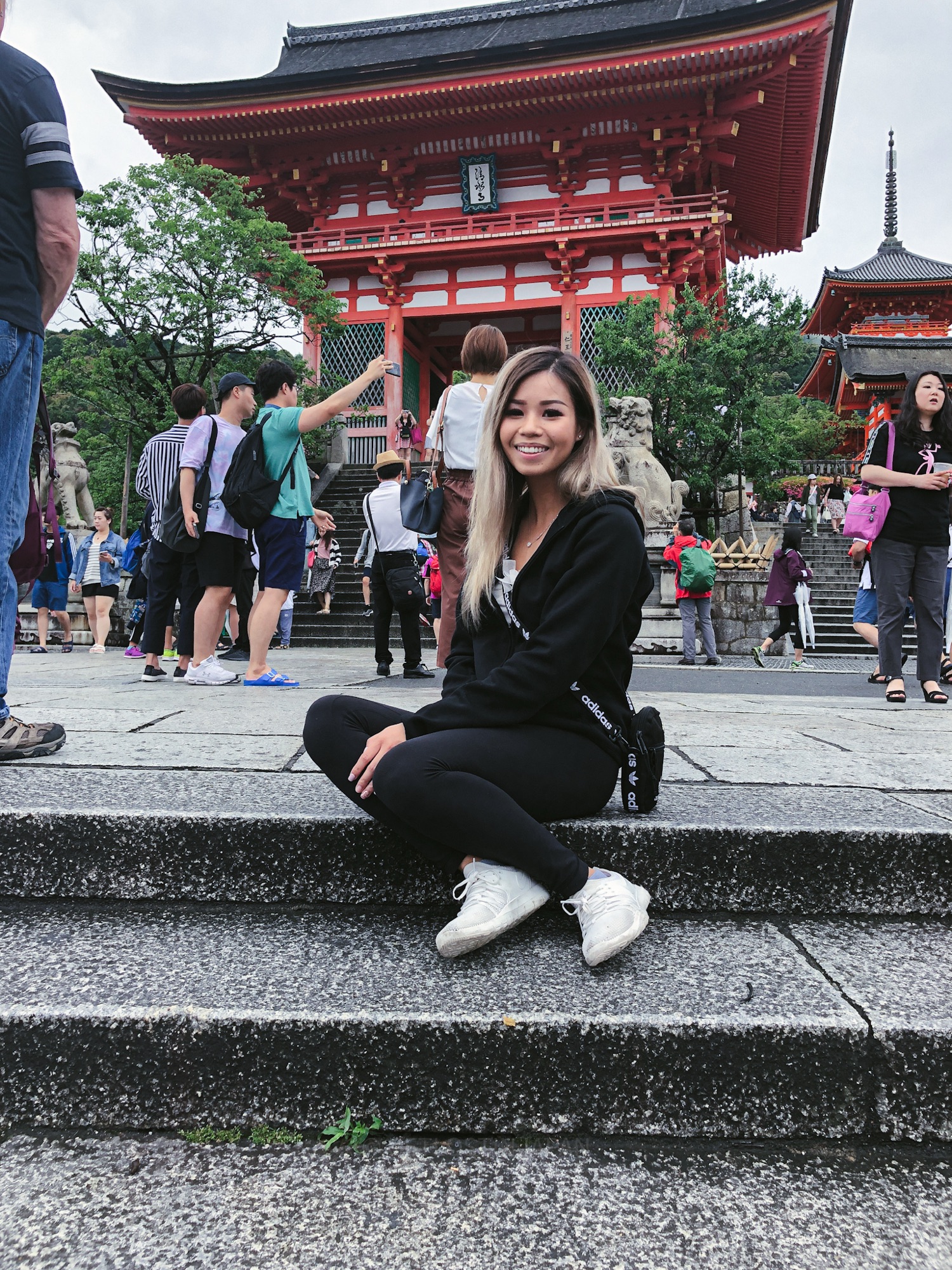
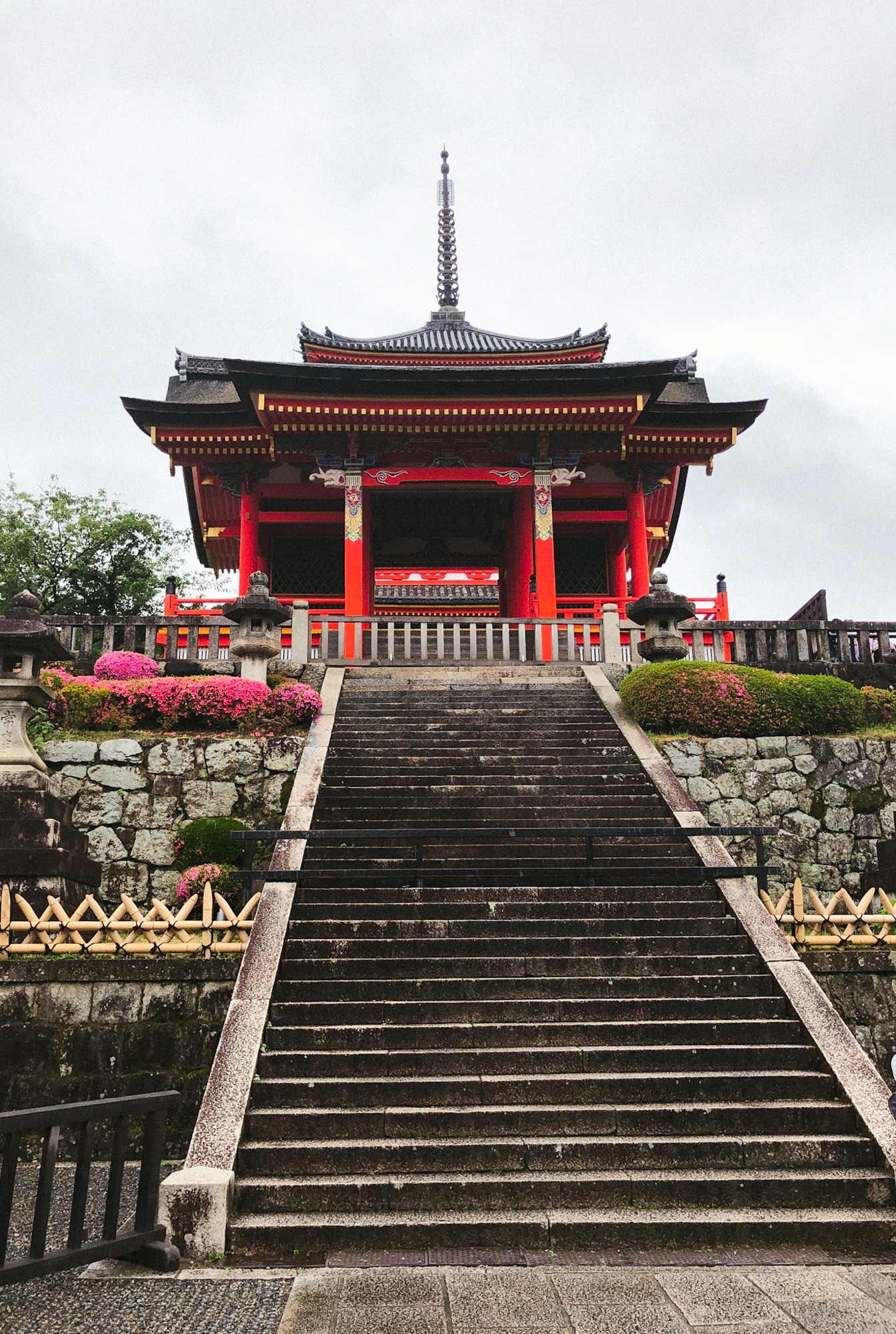
Inside the temple you can pay your respects to Kannon, the goddess of mercy, and then wander the temple grounds. As it’s on top of a hill it is a little bit of a hike to get here, but once you’re at the top the scenery is utterly gorgeous.
I’ve visited both during the day and at night. If you can only pick one, daytime will be your best bet so you can explore the numerous street stalls and shops while they’re open. However, night visits during the temple’s special night viewings are spectacular in a quiet way, with the temple glowing against the dark sky and city lights.
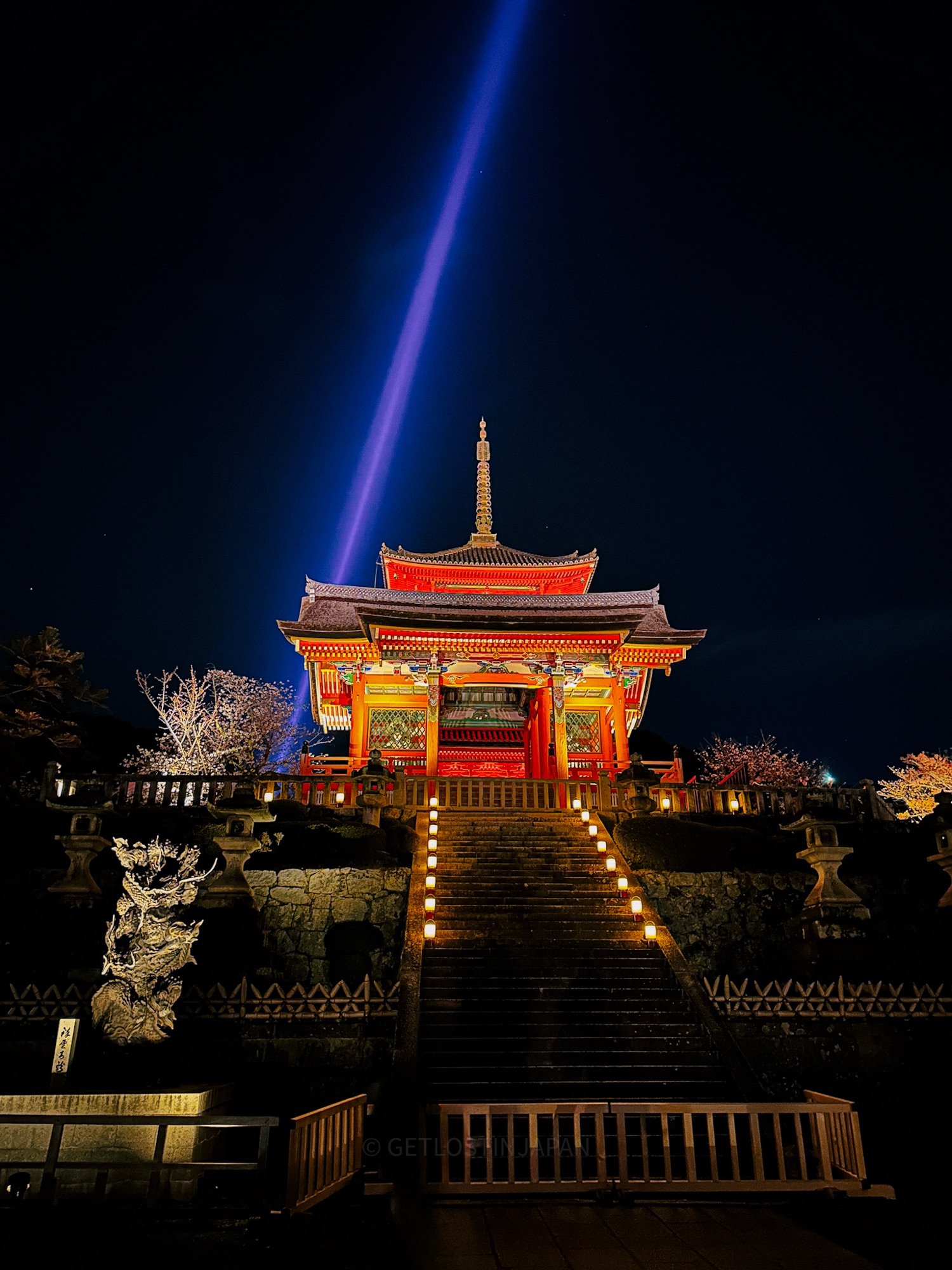
Best photo spots in Kiyomizu-dera: The temple’s wooden stage with Kyoto’s skyline in the background, plus the surrounding gardens during peak cherry blossom season in April.
Hours: Opens daily at 6 AM; closing times vary by season and special events (usually 6 PM, or 8:30 PM during illuminations).
Entrance fee: 400 yen (about $2.75 USD).
🌸 Check out over 3,000 5-star reviews and book your tour to Kiyomizu-dera here! 🌸

3. See the Golden Pavilion at Kinkaku-ji
Kinkaku-ji, also known as the Golden Pavilion, is a Zen Buddhist temple entirely covered in gold leaf. This dazzling building creates a mesmerizing reflection over the still pond that surrounds it, which is why it’s one of Kyoto’s most iconic and photographed landmarks. When it’s a clear, sunny day, the perfect combination of shimmering gold, calm water, and a lush landscape looks like a scene from a painting.
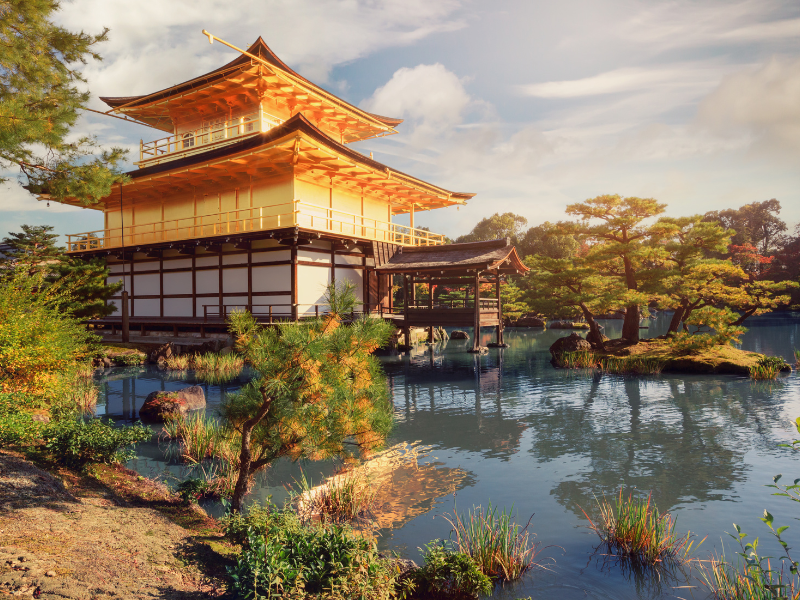
Kinkaku-ji was built in the late 14th century as the retirement villa of shogun Ashikaga Yoshimitsu, but then was later converted into a Zen temple after he passed away in 1408. It’s now been designated as a UNESCO World Heritage Site for its historical importance and beauty.
It’s a bit of a shame that you can’t go inside the temple, but the adjacent gardens are stunning to walk around in regardless. Kinkaku-ji is in northwest Kyoto so it may be a bit out of the way, so it’s best if you visit with a tour. While you’re in the area, you can swing by the nearby Ryoan-ji Temple too.
Hours: 9 AM – 5 PM daily.
Entrance fee: 500–600 yen (about $3.50–$4.10 USD).
How to get there: No train stations nearby; take bus 101 or 205 from Kyoto Station (about 40 minutes), cycle, taxi, or join a guided tour.

4. Explore the Gion Geisha District
One of my favorite things that I did in Kyoto was exploring Gion and learning about the history and culture of this famous geisha district on an evening walking tour!
Geishas, also known as geikos in Kyoto, are highly skilled entertainers that have trained for years in traditional Japanese arts such as dance, music, and tea ceremonies.

On our Gion walking tour we wandered through Gion’s cobblestone streets and I felt like I was stepping into old world Japan. We wandered the peaceful Shirakawa area and passed by lantern-lit alleyways in Pontocho, learning about the symbols on doors and recognizing which teahouses have geiko and maiko performances.
The tour started at 5 PM, and our guide, Thomas, had so much knowledge on geisha culture. The highlight of the tour was spotting a maiko, a geisha in training, at the street intersection! Thomas taught us how to take a photo without being intrusive.
💡 Pro Tip: While there’s always a chance to see a geisha in Gion, remember they are working professionals, not tourist attractions, so be polite and avoid blocking their way.
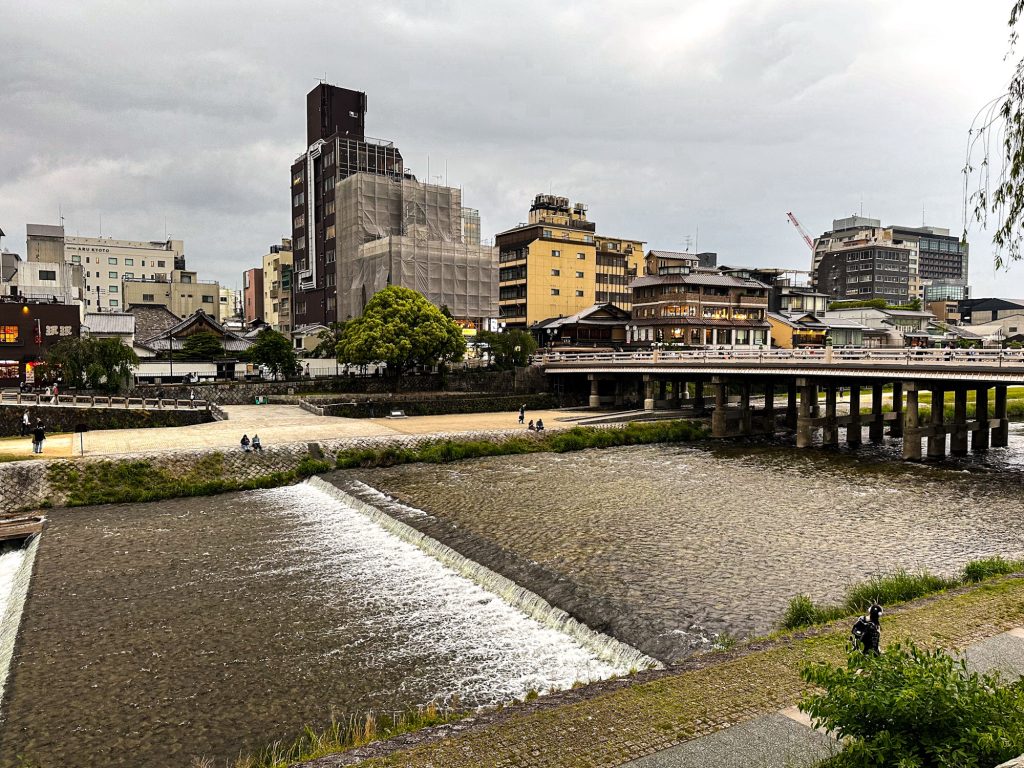
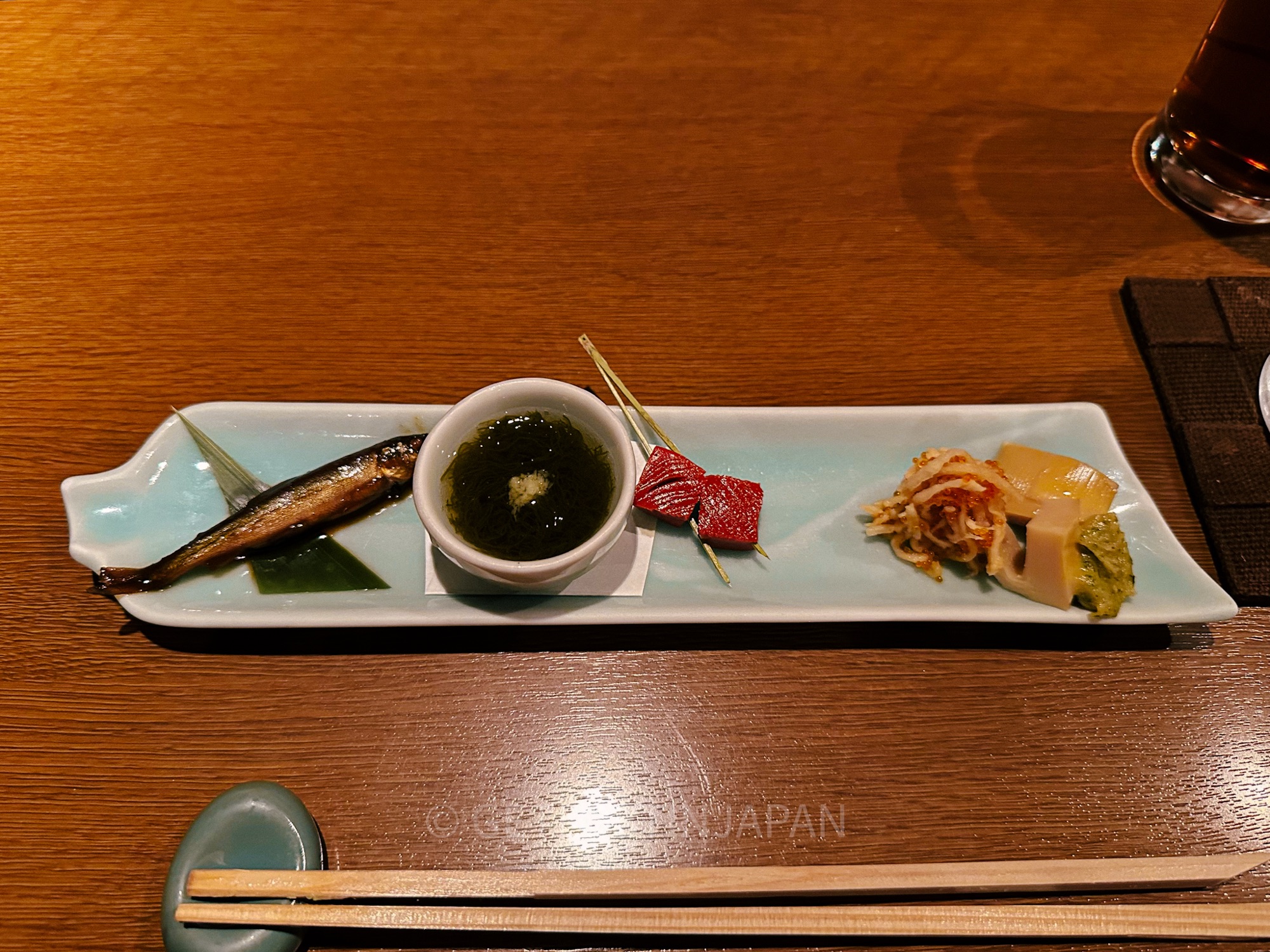
We ended our night with a delicious 10-course kaiseki dinner at Hanasaki, a high end restaurant filled with locals enjoying their own private meals. Kaiseki is known as Japan’s haute cuisine, and usually costs well over $100 USD. The dinner was incredible, and exploring Gion was amazing. It was a perfect combination and I’m glad I got to learn about kaiseki etiquette during our tour! Me and my entire family loved it, and we’re not the only ones since it’s rated 5 stars!
Even if you don’t join a tour, Gion is worth wandering at night when the narrow streets glow with lanterns. The soft light, wooden facades, and hushed atmosphere make it one of the most magical spots in the city.
Check out the 5-star reviews and book this tour here!

5. Eat Your Way Through Nishiki Market
Nishiki Market has been operating for over 400 years, and it’s one of the best places to taste local specialties from Kyoto! Known as “Kyoto’s Kitchen”, this bustling, covered arcade has more than 100 stalls. You can find so many things here, from fresh seafood and local produce, matcha sweets, handmade ceramics, and even plants.
It’s the perfect spot for a DIY street food lunch, just like Tsukiji Market. As you wander around the stalls, you’ll find vendors offering tempura, sizzling seafood skewers, yuba (tofu skin), fresh sashimi, and even sabazushi, mackerel sushi local to Kyoto.
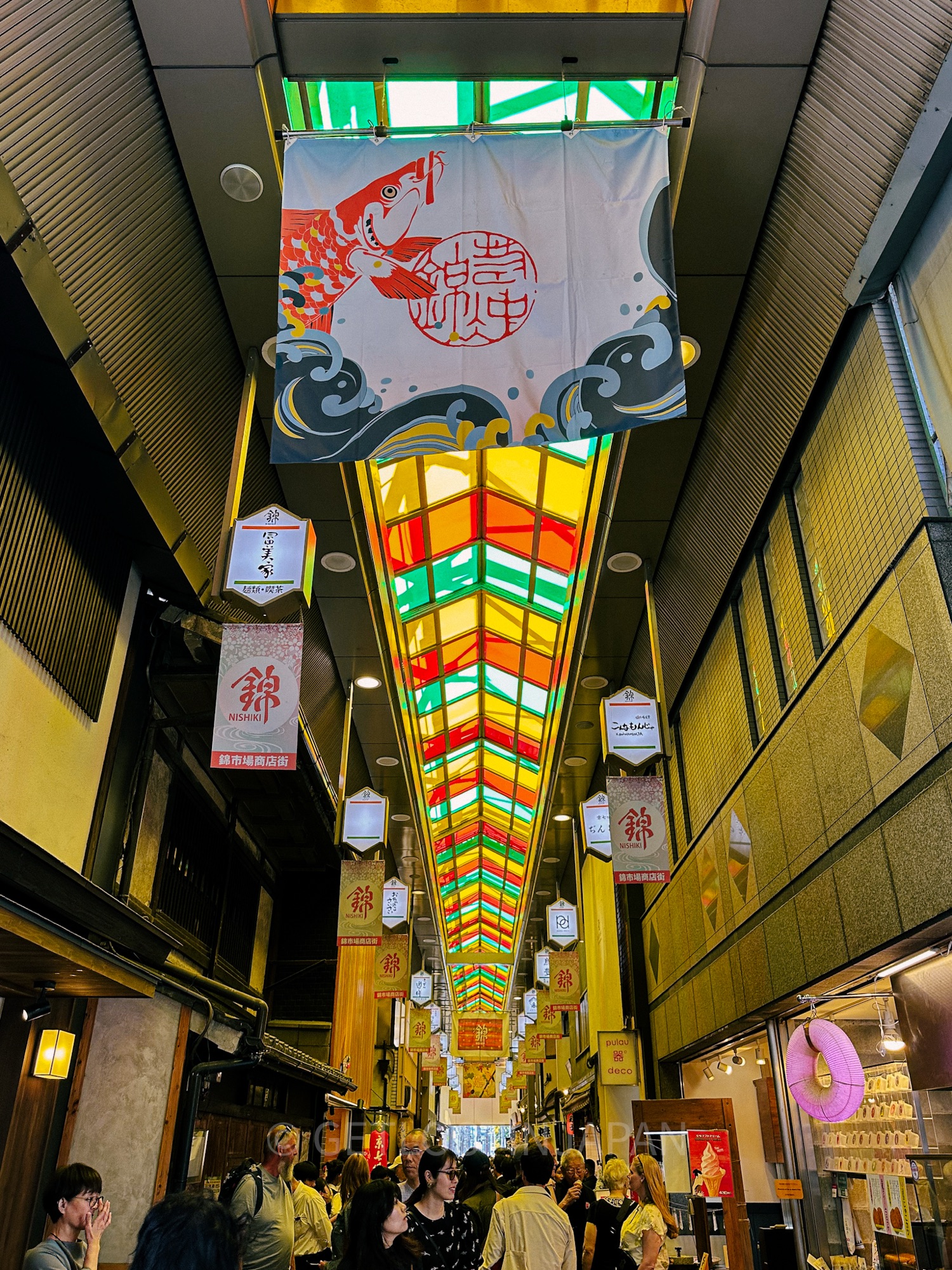
Last time I visited, we picked up miso, matcha, and my personal favorite, Kyo-Rayu chili oil furikake from Ochanoko Saisai. This spice is regional to Kyoto and super hard to find outside of the city, and I’m obsessed with it. On my most recent trip I bought 12 bags and it took up ⅓ of my suitcase, and I have no regrets.
Nishiki Market can get very crowded, especially around lunchtime, so I recommend arriving early (before 11 AM) if you don’t want to walk like sardines.
If you want to learn more about Kyoto’s food culture and taste local specialties, you can join a tour that will guide you around Nishiki Market. You’ll get to taste all kinds of dishes and learn about their history from an experienced local. Many tours even include sake tastings or a sit-down meal at the end, so it’s a pretty great value.
Book your brunch foodie tour with over 1,000 5-star reviews before it sells out!

6. Wander Arashiyama Bamboo Grove
Arashiyama is one of Kyoto’s most scenic areas, famous for its lush mountains, historic temples, and the iconic Arashiyama bamboo forest.
You can easily dedicate a full day or two to exploring this area. There’s the iconic Arashiyama Monkey Park, where you can feed and interact with 120 wild macaques as they roam freely.
Afterwards, you can cross the historic Togetsukyo Bridge for sweeping views of the Katsura River and Arashiyama Mountains. During cherry blossom season, falling blossoms decorate the flourishing landscape.
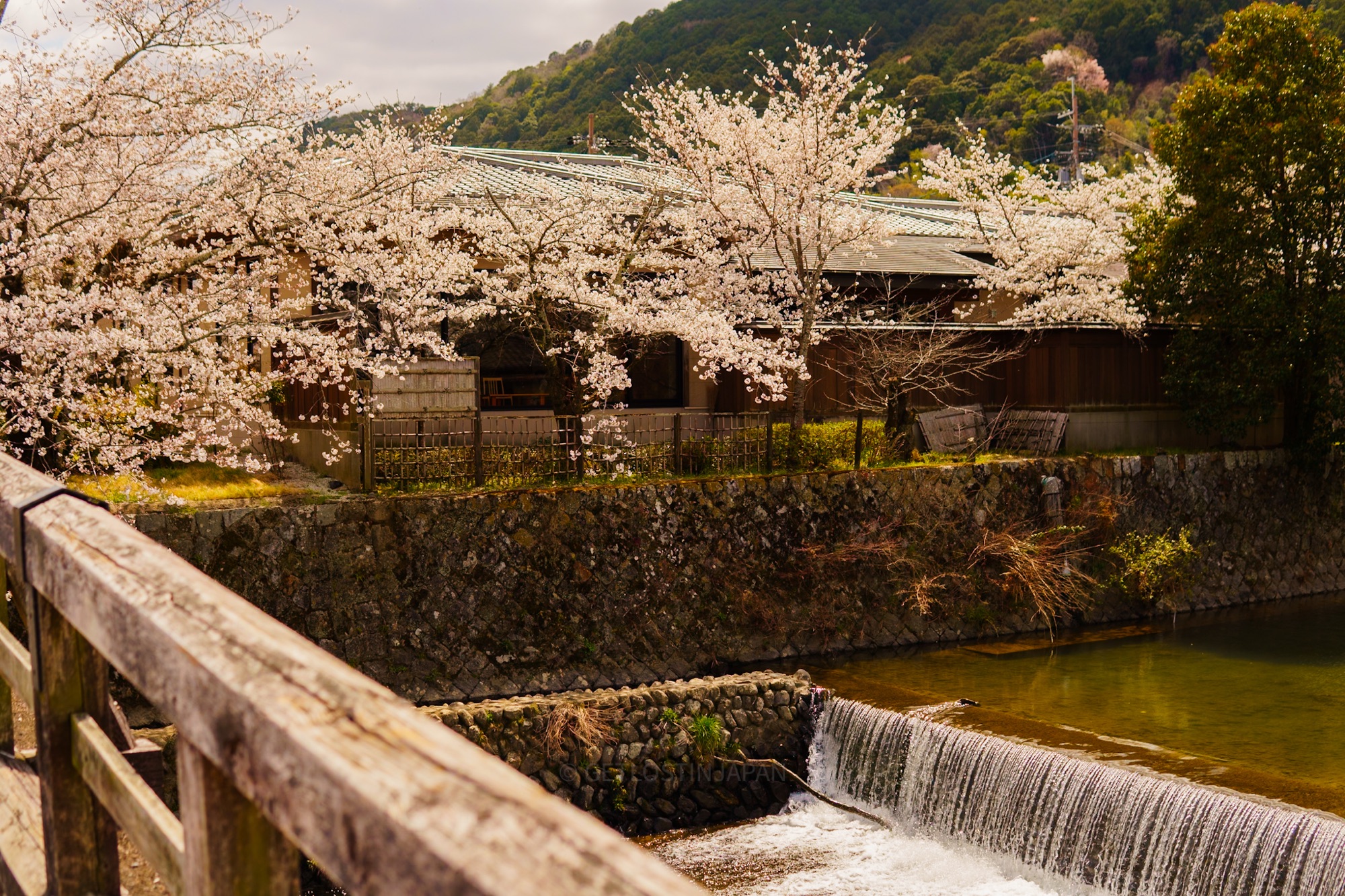
You can stop and eat at one of their themed cafes like Miffy Kitchen or Rilakkuma Cafe, or visit any of the numerous temples here. My personal favorite is Tenryu-ji, a UNESCO World Heritage Site with peaceful gardens and a deep connection to Kyoto’s Zen history. The famous Arashiyama Bamboo Forest is right next door, so you can pop on over for some amazing views.
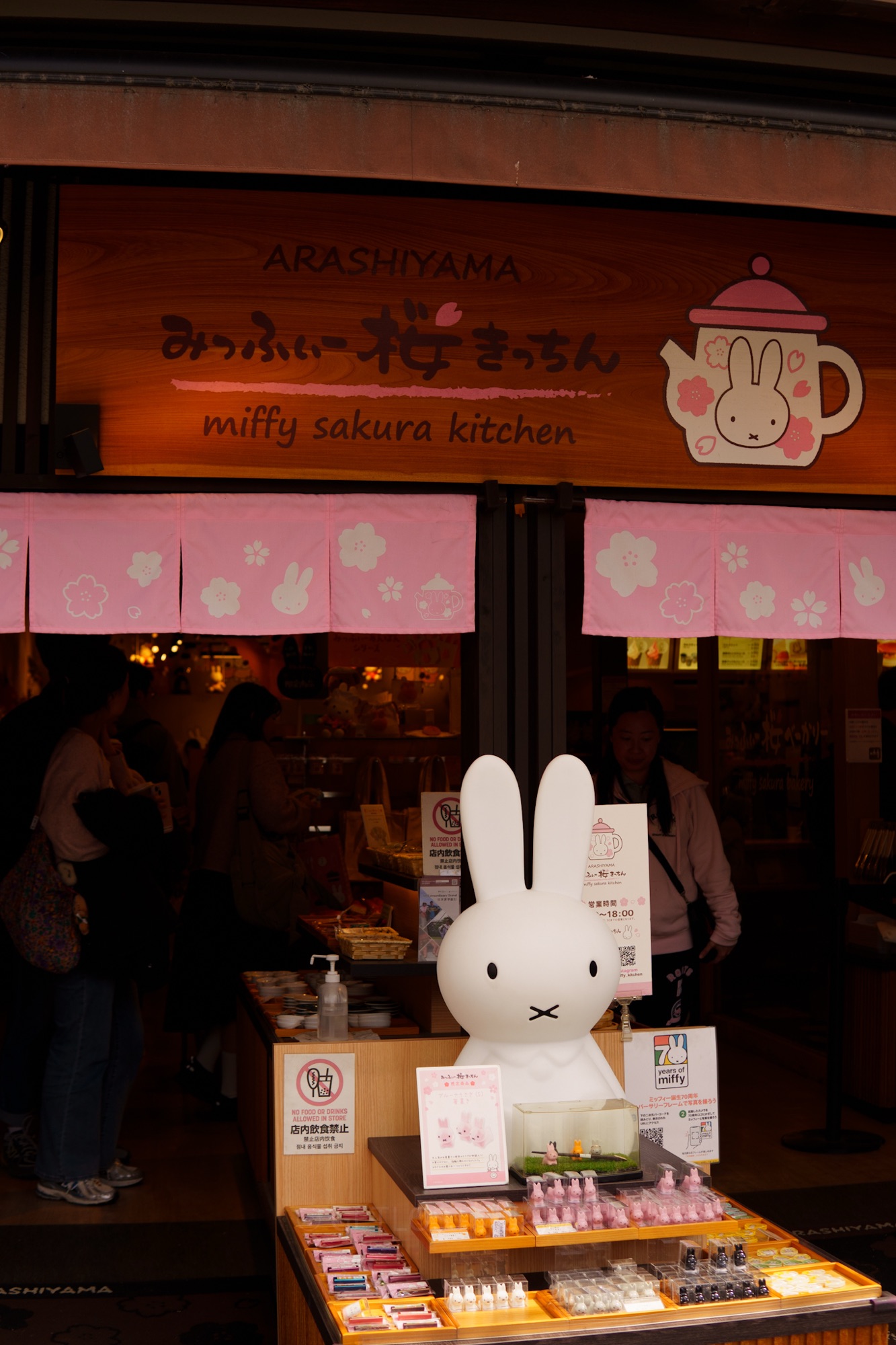
I can go on and on, but the gist is that Arashiyama is one of Kyoto’s most amazing areas, with an unforgettable mix of history, culture, and natural beauty, so don’t miss it! You can book a full day tour for easy transportation or even explore the town via rickshaw.
Additionally, there are some traditional ryokan along the Katsura River you could stay in for beautiful views of the Bamboo Forest and delicious meals.
🎋 Book your spot to explore Arashiyama and enjoy FREE cancellation! 🎋

7. Stroll the Philosopher’s Path
Philosopher’s Path is a scenic stone walkway in northern Higashiyama that stretches just over a mile, linking two of Kyoto’s most beautiful temples, Nanzen-ji and Ginkaku-ji (Silver Pavilion).
The path runs alongside a quiet canal lined with hundreds of cherry trees, making it one of the city’s most famous spots for hanami (cherry blossom viewing). I rented a kimono and came here with my friends upon another traveler’s recommendation, and we took some unbelievable photos here. The pink blossoms arching over the water were undeniably beautiful.
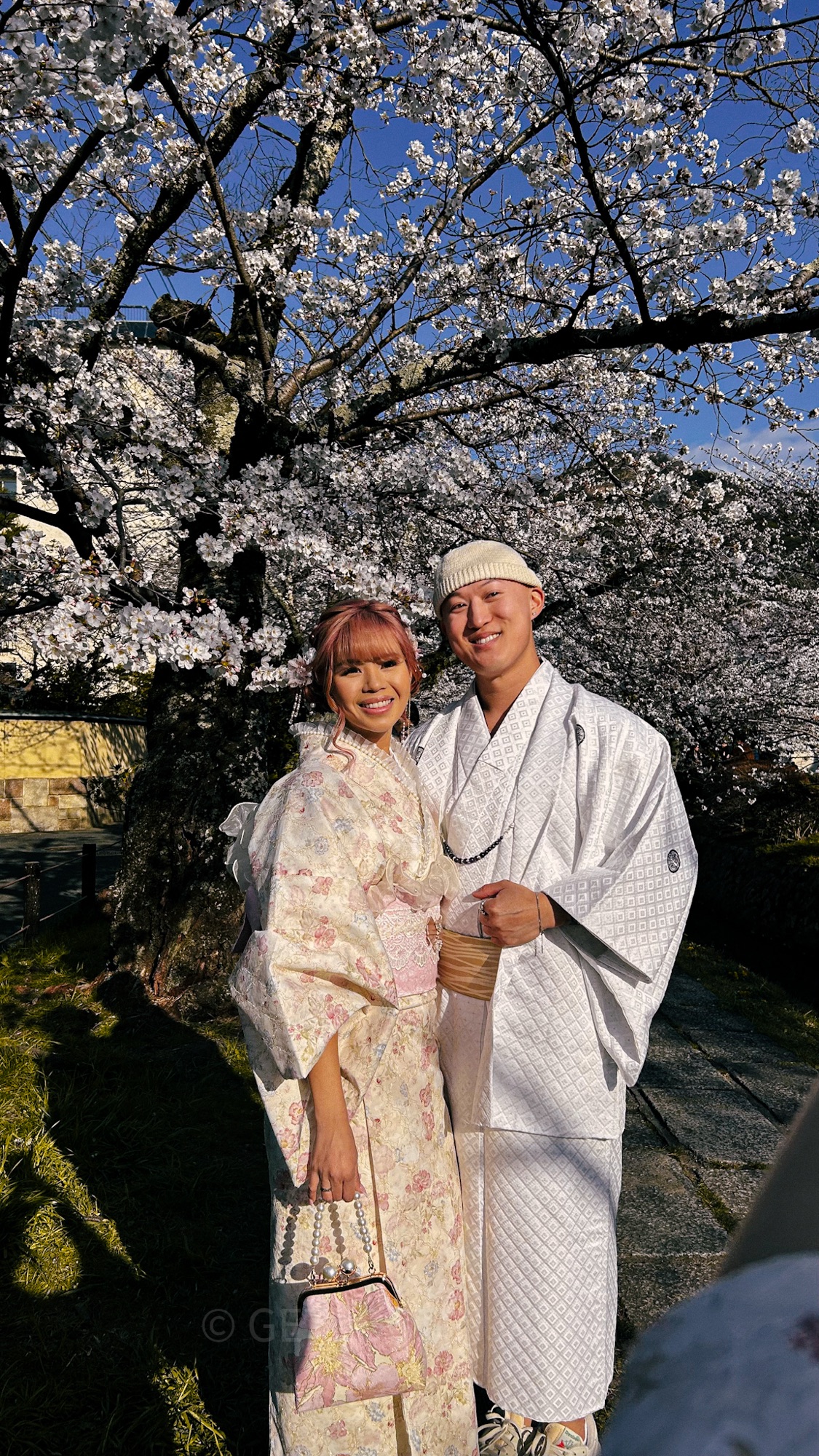
The only con is that the pathway was quite crowded during peak hours, so it was hard to get photos without people or cars in the background. But I still think they turned out stunning! I recommend visiting during early morning for less crowds, and if you venture a little further down the path you can get great photos at one of the temples.
💡 Pro tip: We used Dreamy Kimono Rental in Gion and loved it so much! It was super affordable (around $40) and the couple who owns the shop are soo sweet.

8. Discover Nanzen-ji Temple
As I mentioned earlier, you’ll find Nanzen-ji by walking down to the southern end of the Philosopher's Path. Nanzen-ji is one of Kyoto’s most important Zen temples, and you’ll be able to explore its spacious, shaded grounds, admire the towering Sanmon gate, and see the striking brick aqueduct from the Meiji era.
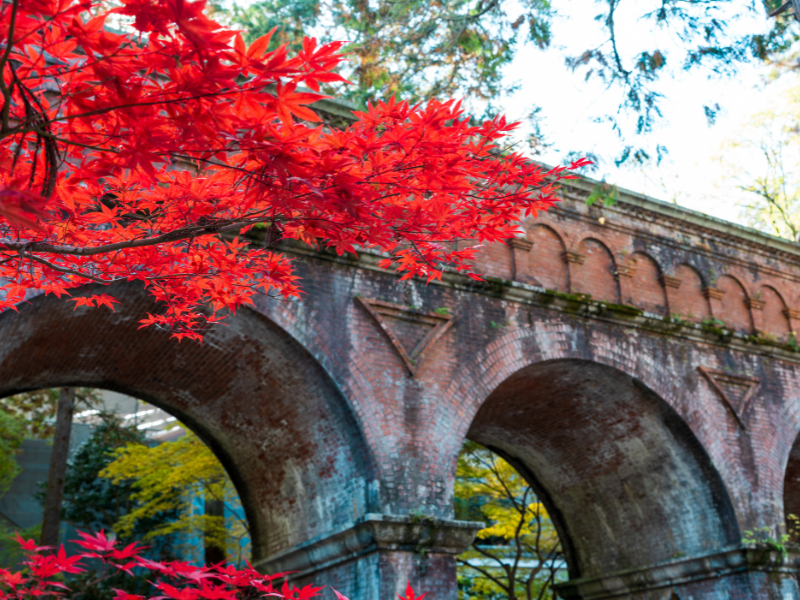
I recommend visiting in Autumn if you can. The Hojo gardens and nearby Tenjuan and Eikando Temple become especially beautiful, with vibrant fall foliage framing the tranquil ponds and mossy stones.
If you’re visiting the Philosopher's Path already, make sure to stop by here as well!

9. Experience a Traditional Tea Ceremony
Kyoto is where the Japanese tea ceremony originated from, so you know you have to experience one for yourself while you’re here!
I loved experiencing an authentic tea ceremony in Japan. First,it was personally prepared and served to us with wagashi (traditional Japanese confectionery). Then we learned the proper etiquette to prepare it ourselves and how to drink the tea respectfully.
I learned it at a tea house cultural center, and you can either book appointments at tea houses or some temples.
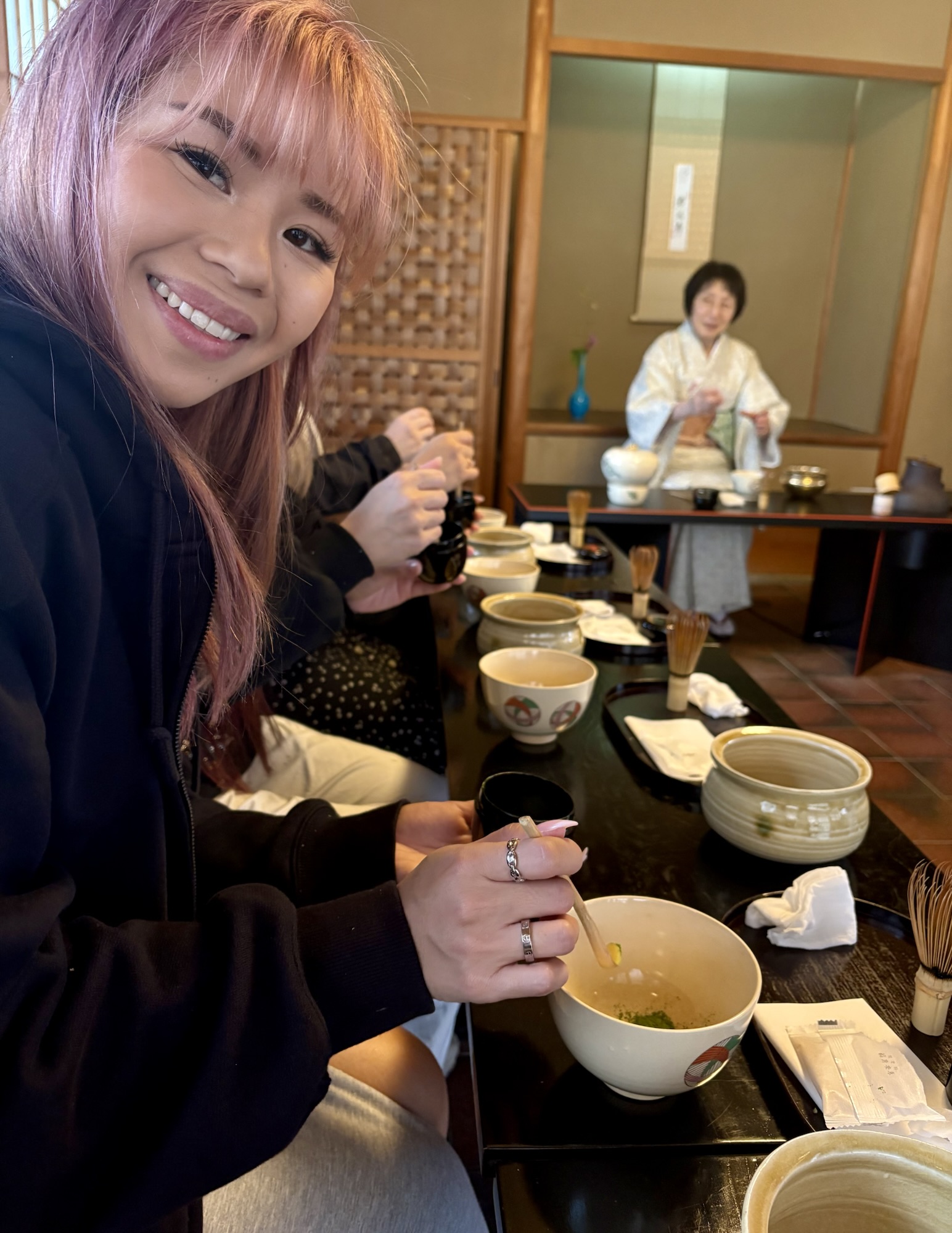
Even if you can’t fit in a traditional tea ceremony, you should still enjoy some tea during your visit!
Ippodo Tea is a highly regarded tea shop that’s been around for almost 300 years, and I made a stop here and bought some amazing ceremonial grade matcha that tastes wonderful. This is the perfect place to sample high-quality tea and take some home as a souvenir.
We prepare it every morning with the whisk and the technique we learned, and it tastes phenomenal.
🍵 Want to experience a tea ceremony in a 100-year-old Machiya House? Click Here! 🍵

10. Dine Along Pontocho Alley
Pontocho is one of Kyoto’s most atmospheric dining areas.
Located in Gion and running parallel to the Kamogawa river, the alley is lined with traditional wooden buildings and glowing lanterns.
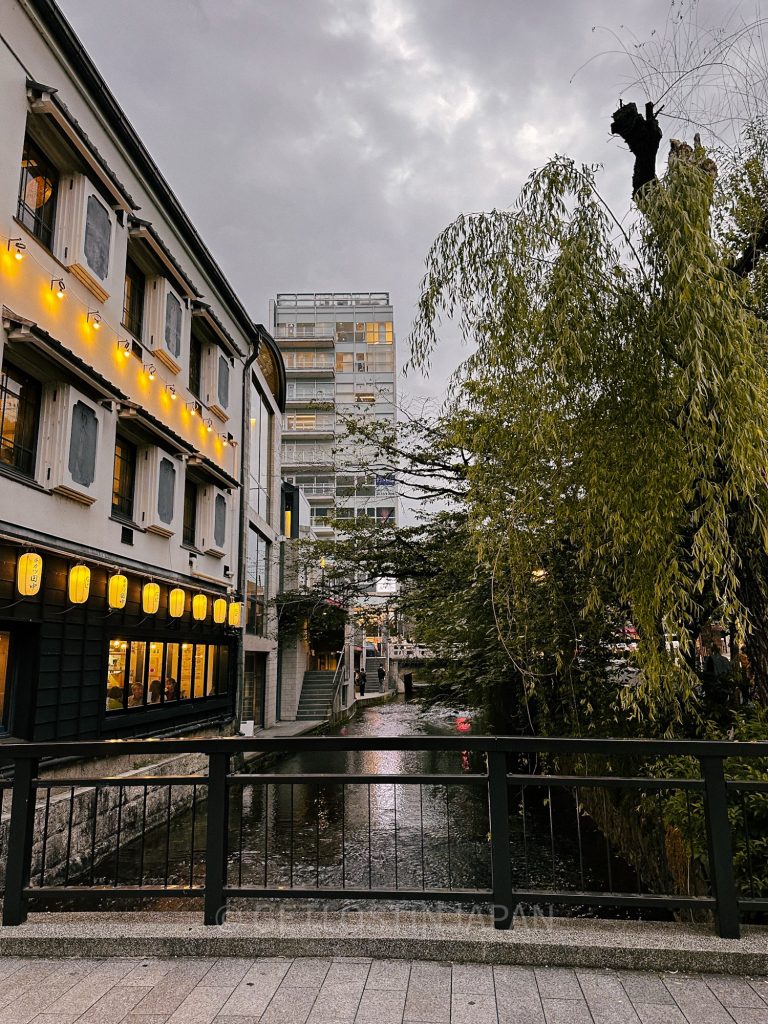
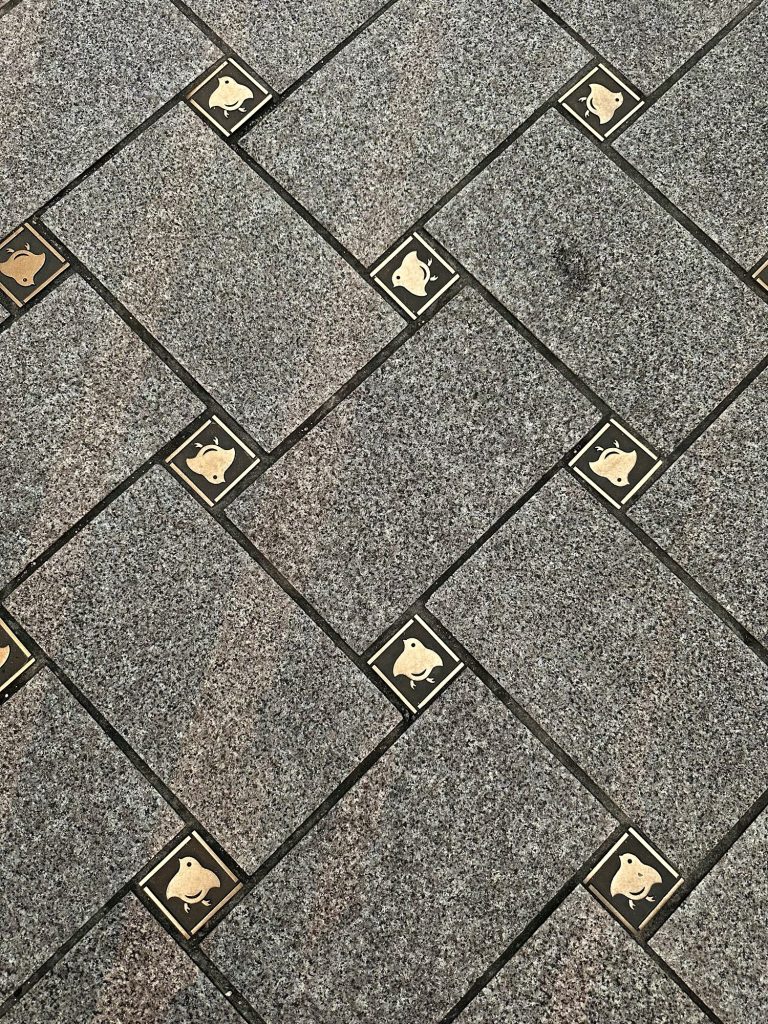
You’ll find all sorts of restaurants here, from casual eateries to upscale kaiseki meals.
When I went on an evening walking tour, we learned that Pontocho uses the chidori, a very cute plover bird, as its kamon (emblem) due to the plovers that hang around the river! See if you can spot the cute bird as you stroll around the Pontocho alleyways!

11. Take a Day Trip to Nara
Since Nara is only 45 minutes from Kyoto, you should definitely take a half day or day trip to visit the bowing deer at Nara Park! It’s one of the quintessential things first-time visitors gotta do when they come to Japan.
The deer have learned how to bow to visitors in exchange for treats, which are sold all around the park. They can be a little overwhelming and a little too friendly, but meeting them is definitely a highlight and must-do, albeit a little bit touristy.
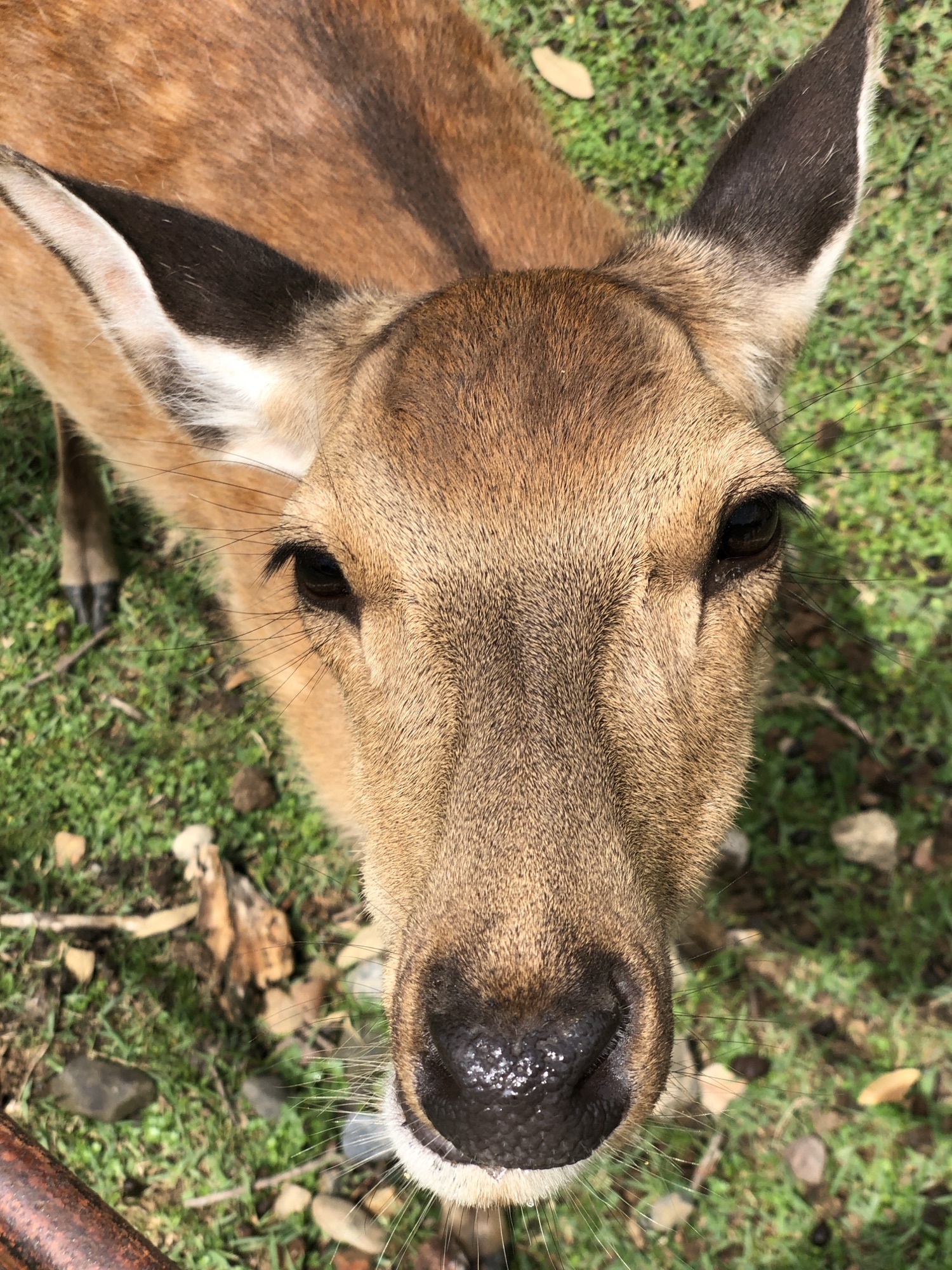
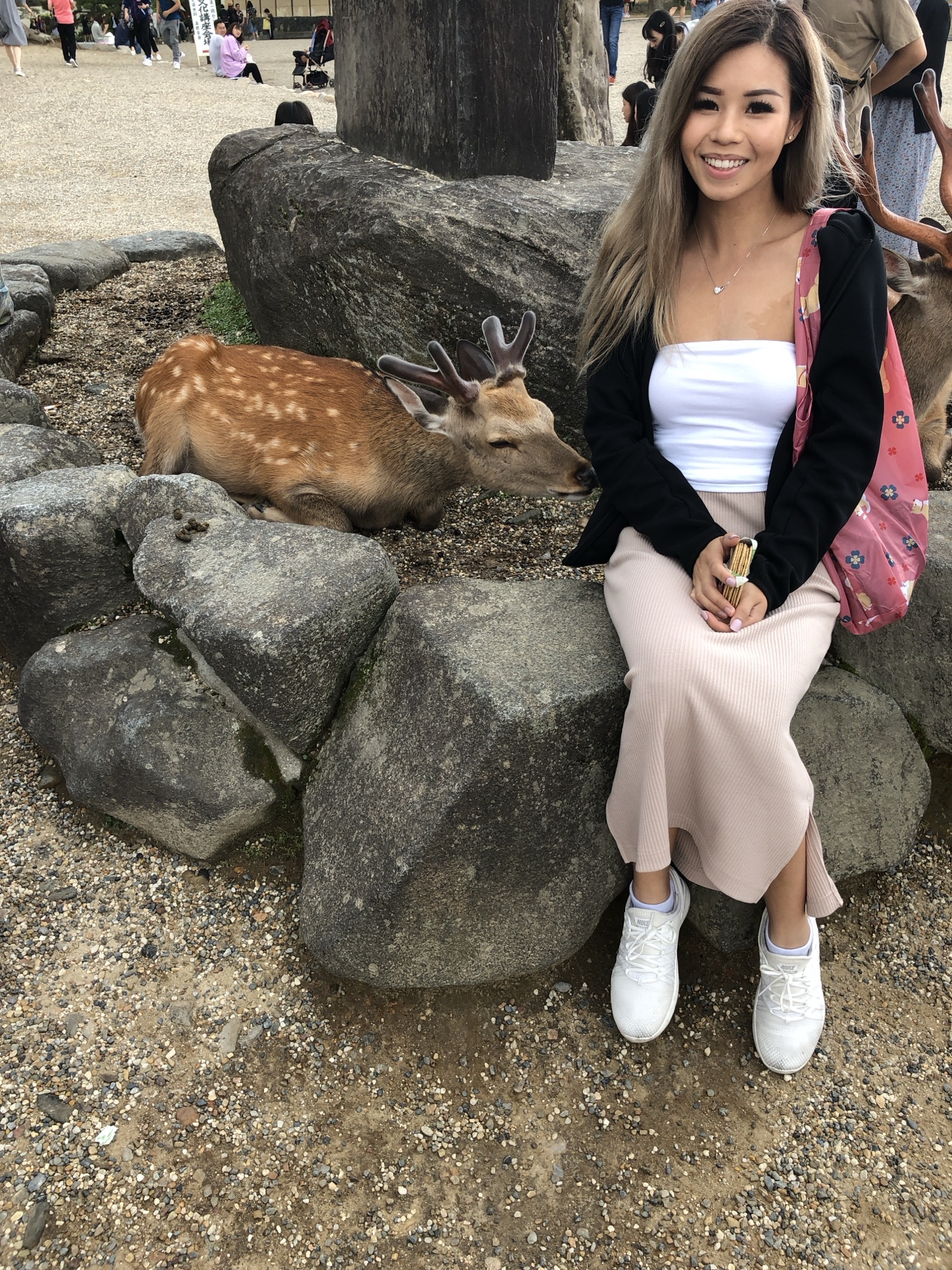
Beyond the deer, there are a ton of cultural landmarks in Nara. You can visit the Great Buddha of Nara at Todaiji Temple, see the thousands of stone and bronze lanterns at Kasuga Taisha Shrine, and watch the famous high-speed mochi pounding at Nakatanidou.
Don’t forget to grab some of the freshly made mochi while you’re at it! It’s incredibly soft and chewy.

12. Join a Cooking Class or Food Tour
Joining a cooking class is a fun, interactive way to learn about Japanese cuisine and learn a new recipe to make at home! You can create traditional Japanese dishes like ramen, sushi, or wagashi.
Alternatively, a food tour of Kyoto is a great way to discover regional specialties that you might have never guessed to try! An experienced local guide will introduce you to must-eats and hidden gems.

You could join a cooking class and learn how to make Japanese cuisine like ramen, sushi, or wagashi. Alternatively, a food tour of the local area is a great way to discover regional specialties that you might have never tried before!
This booked out Kyoto food tour takes you around Old Kyoto, stopping into small bars and restaurants to sample traditional food. You can also try three different types of local sake too, all included! It’s a great way to meet friends and step outside of your comfort zone to sample new flavors.


13. Visit Heian Shrine & Gardens
Heian Shrine is a striking landmark with a massive red torii gate and bright vermillion buildings modeled after the original Imperial Palace from the Heian Period.
It was built in commemoration of the 1,100th anniversary of Kyoto, which was originally named Heian!
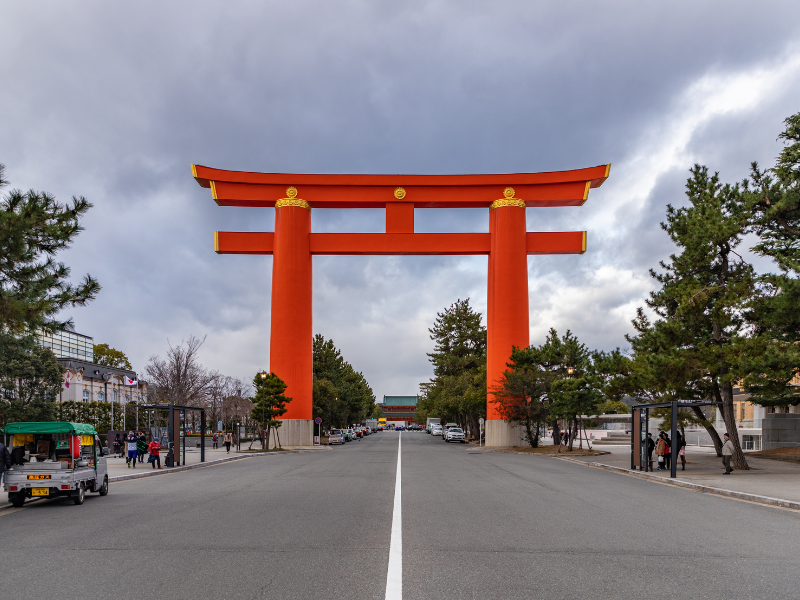
One of the best things to do in Kyoto is to explore the stunning gardens behind it. While the serene ponds, wooden bridges, and variety of plants are beautiful to admire, the highlight of the Heian gardens are the weeping cherry trees.
In fact, Heian gardens are one of the best places to visit during cherry blossom season. Visit in the early morning to beat the crowds!

14. Dress Up in a Kimono
If you’re interested in renting a kimono while you’re here (yes, foreigners are allowed!) I highly recommend doing so in Kyoto. The city is full of gorgeous temples and aesthetic streets that make perfect photo backdrops, and tons of kimono shops are around.
While walk-ins are possible, I prefer to book ahead so they know we’re coming. The earlier you are able to rent a kimono, the more selections will be available. Dressing up and hair styling can take an hour or more, and most shops close by 5 PM, so don’t book too late.
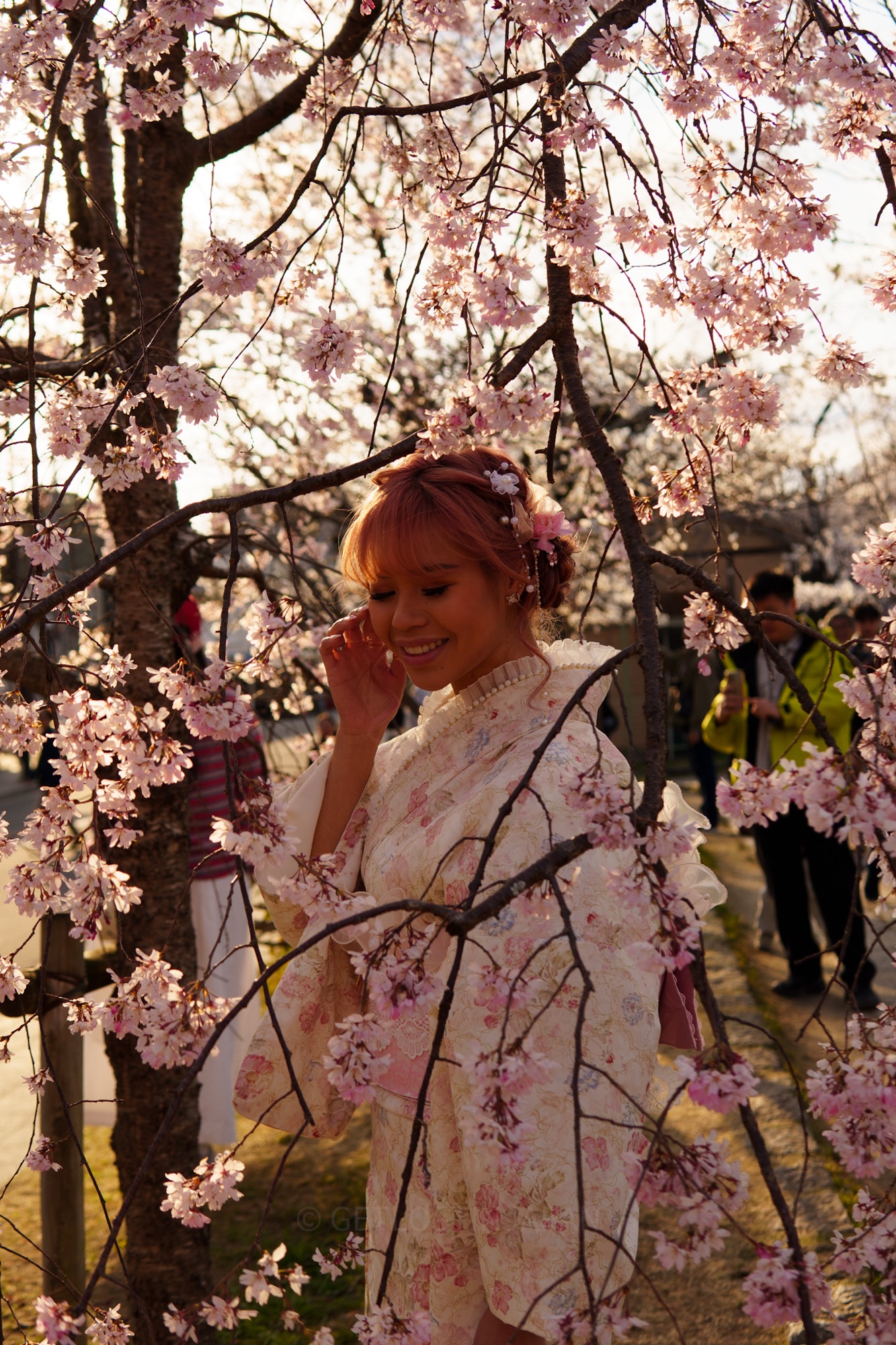
My favorite shop is Dreamy Kimono Rental Kyoto Gion Shijo. I came here with my friends on a recommendation, and they were so attentive to our group of 8. The owners are very sweet, and can speak English, Japanese, and Chinese.
My rental only costed about $40 with hair included, and they let us return our kimonos at 6 PM because it took a little longer to get dressed due to our group size.
I recommend taking photos at Fushimi Inari, Kiyomizu-dera, Bishamondo Temple (autumn), and the Philosopher’s Path (cherry blossom season). You can’t really avoid the crowds, but the scenery is just so breathtaking it’s worth the wait.

15. Hike from Kurama to Kibune
The hike from Kurama to Kibune is a peaceful half-day escape into the mountains, and is just 25–30 minutes from Kyoto by train. It’s one of the more unique things to do here.
The trail takes you through serene cedar forests, past small shrines, and up to Kurama-dera Temple, which offers sweeping views of the surrounding hills that are absolutely stunning in autumn when the colors change.
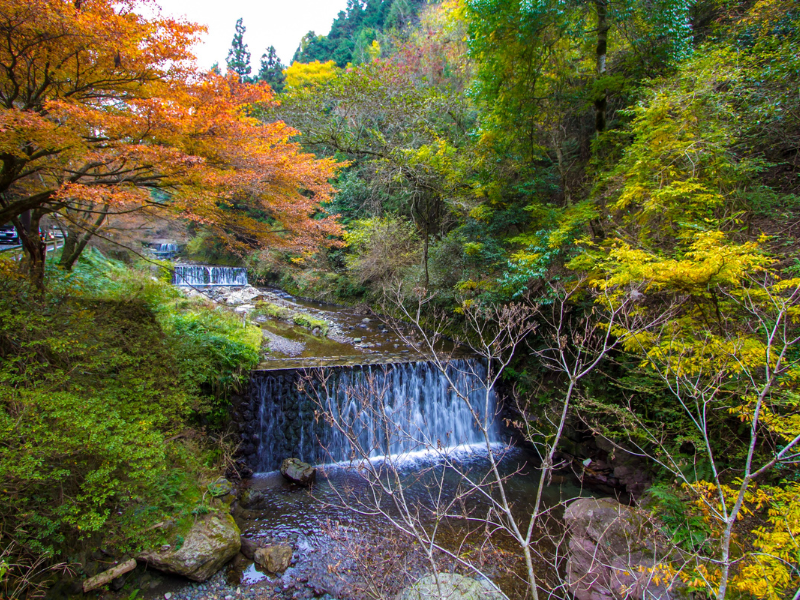
You can start in either village: begin in Kibune to visit Kifune Shrine and climb over the mountain, or start in Kurama and work your way downhill.
The well-maintained path takes about two hours, and there are stone steps for most of the route, so it’s not strenuous. You can even shorten the climb by taking a cable car partway up.
Afterward, you can explore Kurama’s traditional onsen or have a meal in Kibune to celebrate the end of your hike.

Where to Stay in Kyoto, Japan
Here are my top hotel recommendations for your trip to Kyoto! These are all hotels I’ve personally stayed at and loved!
Luxury - Saka Hotel Kyoto ($$$)
Saka Hotel is a beautiful blend of modern comfort and traditional ryokan charm just steps from Kiyomizu-dera Temple. The service is incredible, the food is delicious, and the traditional hinoki baths in every room are perfect for unwinding after a day of sightseeing.
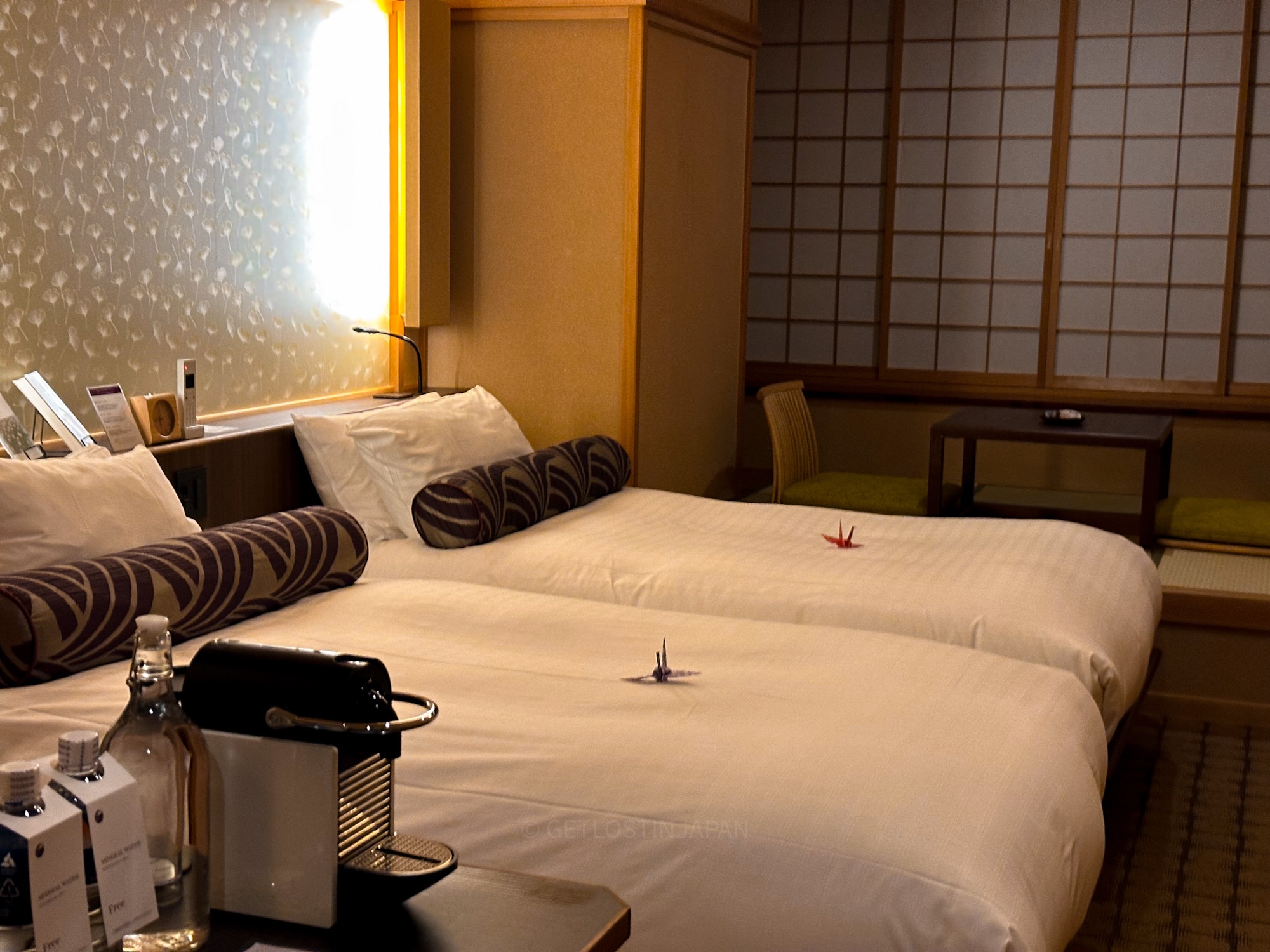
Rooms feature spacious, comfortable Western beds, and large beds are quite rare in Japan! We stayed here ourselves and absolutely loved the experience. You can read my full in-depth review of Saka Hotel here.

Mid-Range - M’s Hotel Gojo Odawara ($$)
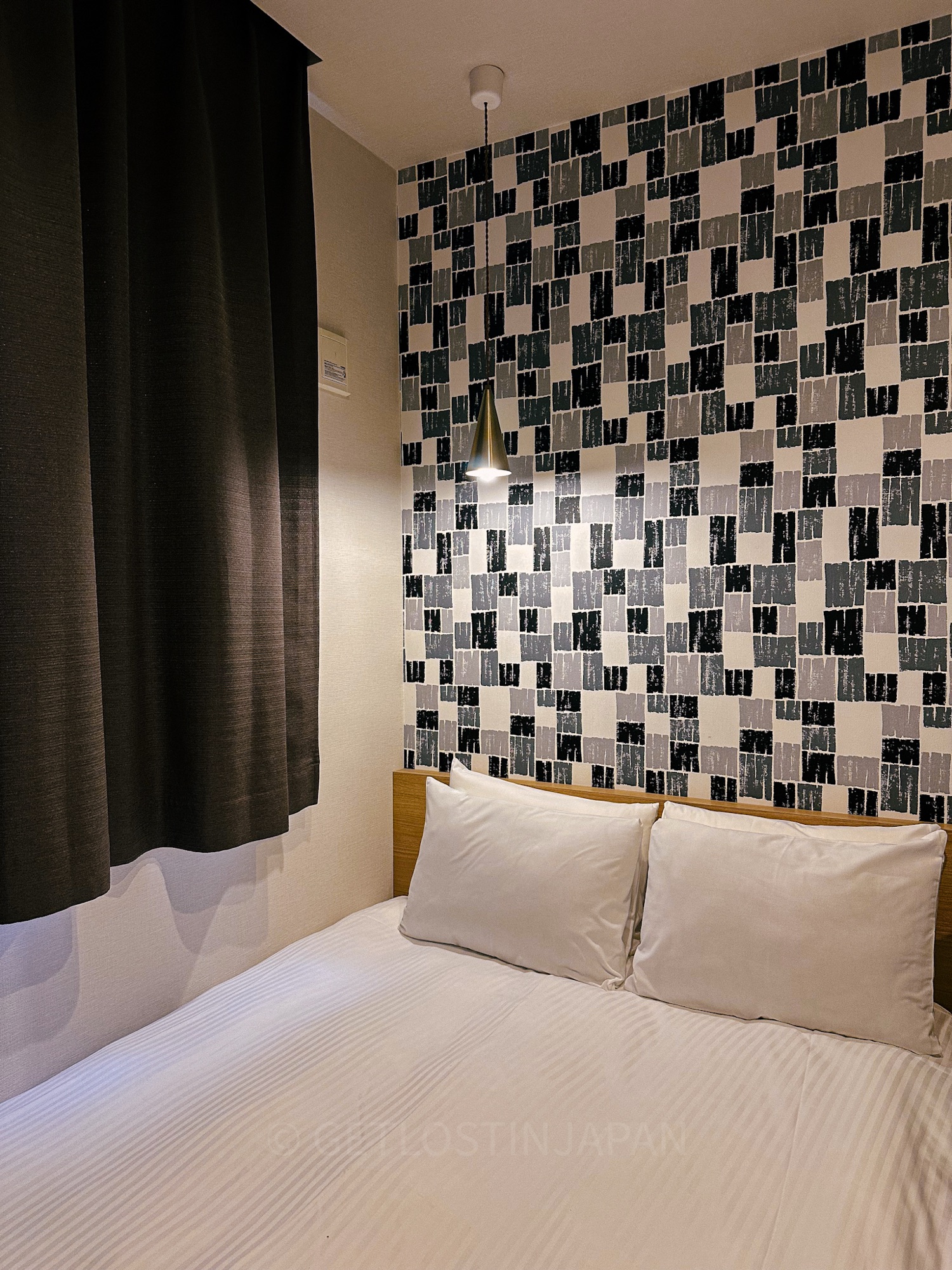
I recently stayed here and was pleasantly surprised by how spacious the room was for Japan. The beds were super comfortable, the hotel has a sleek, modern design with keyless entry, and the location is just a 6-minute train ride from Kyoto Station.

Budget: K's House Kyoto ($)
I’ve stayed at two different K’s House locations and they’ve always been a fantastic value. They offer clean, well-maintained facilities, and private double rooms for couples at just $40–50 per night (around $25 each if you’re sharing). The staff are also super helpful and friendly!

Renting a car in Japan
While Japan's train system is a formidable force and are usually all you need, sometimes you just can’t beat the convenience and flexibility a car brings.

I loved renting a car and exploring off the beaten path, and Kyoto is spaced out enough that you won’t feel overwhelmed. I personally wouldn’t recommend driving in Tokyo or Osaka.
We used Orix with Booking and had a great experience! You can easily check prices, filter for the type of vehicle you want, and add affordable full coverage insurance during check out.

Tips for Renting a Car in Japan
- Drive on the left: In Japan, cars drive on the left side of the road and the steering wheel is on the right. It’s not hard to adjust, but give yourself some warm-up time on quieter roads before navigating busy city traffic.
- Learn the rules: Brush up with a quick YouTube video before your trip. Stop signs in Japan are big, red, and read “止まれ” (tomare), and you must come to a complete stop. Pedestrians always have the right of way, and everyone in the car must wear a seatbelt.
- Get car insurance: With narrow parking spaces, winding mountain roads, and the occasional wildlife encounter, having insurance is worth it for peace of mind. If you book through Booking, you can easily add coverage at checkout.
- Pick the right car: Japan’s roads, especially in the countryside or older towns, can be tight. A small or mid-sized car is usually best. Booking lets you filter by car size, transmission type, and luggage space.
- Plan for toll roads: Japan has many toll expressways, so consider adding an ETC card to your rental. It makes paying tolls quick and cash-free, saving you from having to keep cash on hand at all times.
What you need to rent a car in Japan
- Your valid driver’s license from home
- An International Driving Permit (IDP) based on the 1949 Geneva Convention (Japan does not accept any other type). In the US, you can get one in about 20 minutes at AAA
- A credit card in the driver’s name for the deposit
- Most rentals require you to be at least 18, although some prefer a year of driving experience. Drivers under 25 may face an additional fee
Ready to give left-sided driving a spin? Click here to book with Booking!

Don’t Forget Travel Insurance
While traveling in a foreign country, it's essential to get full coverage trip insurance just in case of an accident or illness. I recommend VisitorsCoverage for affordable prices and great insurance benefits.
Additionally, if you have the Chase Sapphire Reserve Credit Card, you get automatic trip insurance when you book your flight or car rental!
Thanks for reading!
I hope you have some ideas marinating in your head for what to see when you go to Kyoto! If you need help structuring your day, check out my 1 Day Kyoto and 1 Day Arashiyama itineraries for ideas.

I love Kyoto more and more every time I visit. I’ve always loved historical sites and temples, so I can never get enough. Kyoto is the perfect mix of natural beauty, cultural hidden gems, and must-see landmarks.
Which of these fun things to do in Kyoto do you want to try first? Let me know by leaving a comment, and I hope you have the best trip to Japan!
Related Posts
